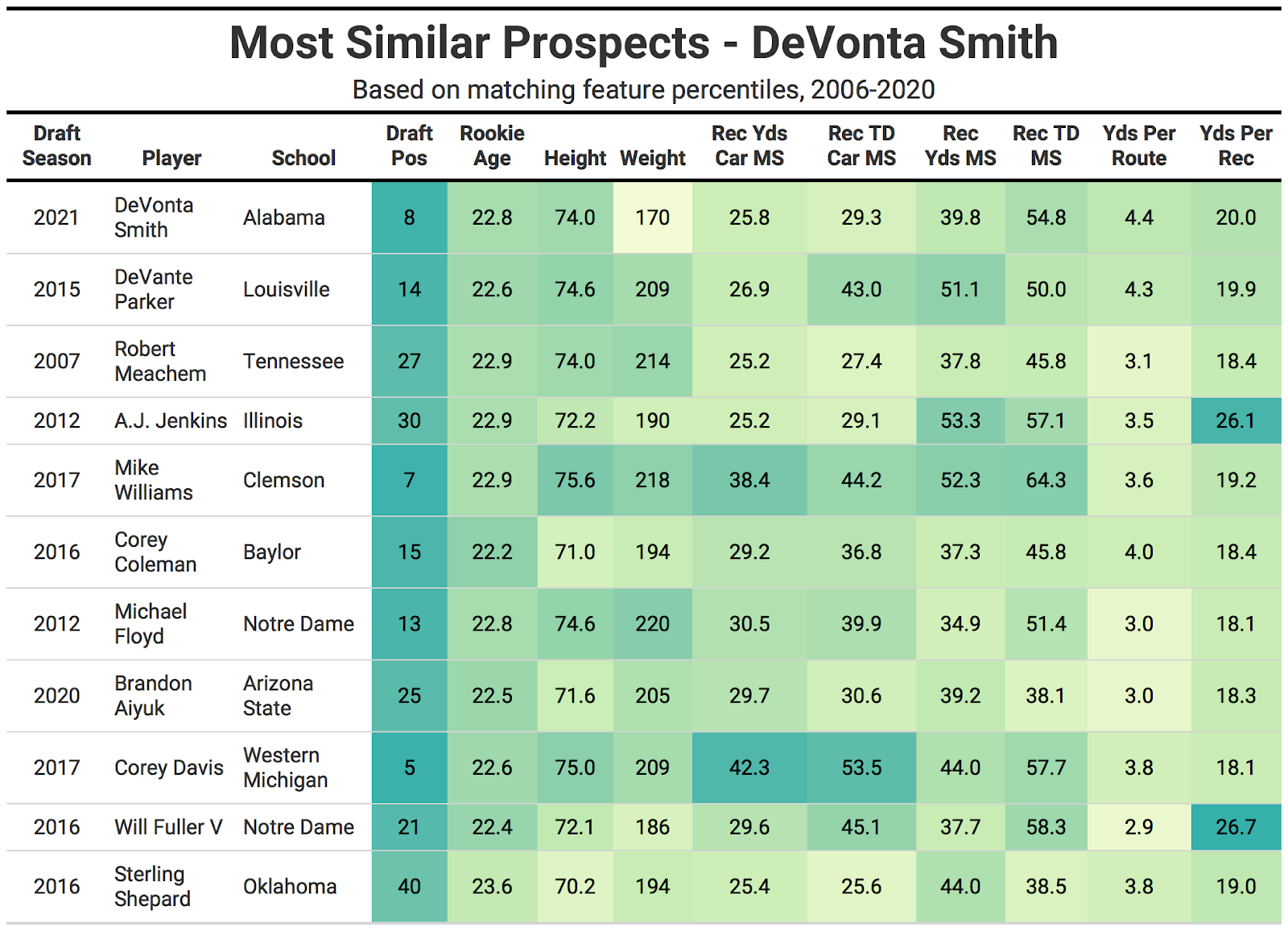Comparing current NFL draft prospects to those of years past is standard procedure in draft evaluation, though most comparisons are built on the memory recall and subjective opinion of the particular evaluator.
This will be the first in a series of articles comparing the 2021 draft prospects to prior years and picking out the most similar comps with a clearly delineated and quantifiable method.
PFF data scientist Eric Eager has done tremendous work building college-to-pro projections, which are built off the robust college data we’ve collected since 2014 and have been applied to exercises like building an “Analytics” Mock. In this analysis, I will use some of our advanced stats for comparison but primarily rely on traditional stats to go back further to compare the 2021 prospects to draft classes going back to 2006.
Without the NFL Scouting Combine this season, the important measurables like weight and 40-yard dash will be reported through the various pro days.
View PFF's 2021 NFL Draft position rankings:
QB | RB | WR | TE | T | iOL | DI | EDGE | LB | CB | S
METHODOLOGY
The comps below were derived from a two-step process. First, I converted all the most statistically relevant stats and measurables to percentiles based on the thousands of prospects who have entered the NFL since 2006 at each position. Then, I filtered the total universe of past prospects by those who had draft positions, weight and 40 times within a 10th percentile in either direction of Alabama WR DeVonta Smith. For undrafted players, I assigned a numerical draft position of 300.
The rest of the matching features were transformed by principal component analysis (PCA). I found the closest statistically comparable players by the euclidean distance between the players' principle components, listed in the top 10 below.
The metrics for PCA are career market shares for receiving yards and receiving touchdowns, best-season market shares for receiving yards and touchdowns, yards per route run, and yards per reception.
For Smith's draft position, I’m using an estimate based on the mock data collected at GrindingTheMocks.com. For the weight and 40 time, I’m using the numbers from his pro day, with a 0.03-second penalty added to the 40 time to reflect the uncertainty of pro-day timed measurements.
Most comparable players
Smith is an unusual prospect in many ways, but his physical profile at an estimated 6-foot-2 and 170 pounds is completely unique. Of the 450 wide receivers who have available measurables and have been drafted since 2006, only seven weighed in under 170 pounds and none were taller than J.J. Nelson at 5-foot-10.
Because he is so physically unique, the height and weight numbers in the table below were not part of the matching algorithm to find the closest comparable players. This is purely an age- and stats-based comparison.
Despite his smaller frame, he was able to get off of press coverage with regularity.
Never even touches Devonta Smith pic.twitter.com/NB4j2C63Z3
— Sam Penix (@Sam_Penix) April 15, 2021
As a non-early declare leaving after his true senior season, the Alabama pass-catcher is a bit older than the typical first-round wide receiver. His age skews his comps a little older, which is generally a negative for forecasting future success.

Smith contributed throughout his collegiate career but didn’t really break out until his junior season and became a truly dominant player in his final season.
The divergence in Smith’s career and best-season market shares makes later breakouts such as DeVante Parker close statistical comps. The context with Parker is that his big-time senior breakout happened in an injury-shortened, six-game season. Smith provided a bigger sample and proved himself to a greater degree in his Heisman-winning 2020 campaign.
Exclusive content for premium subscribers

WANT TO KEEP READING?
Dominate Fantasy Football & Betting with AI-Powered Data & Tools Trusted By All 32 Teams
Already have a subscription? Log in




 © 2025 PFF - all rights reserved.
© 2025 PFF - all rights reserved.